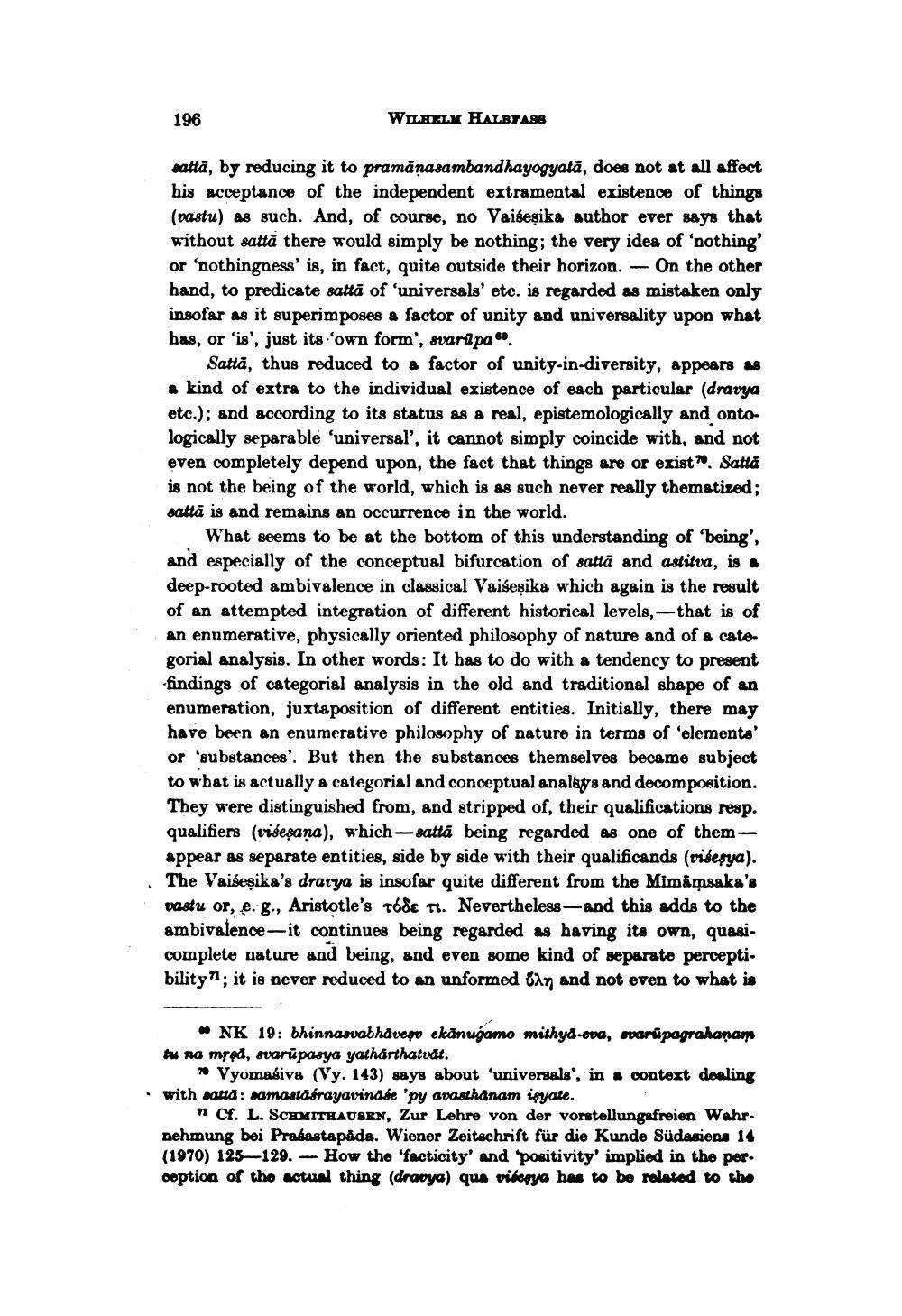________________
196
WILHELM HALBFASS
satta, by reducing it to pramānasambandhayogyata, does not at all affect his acceptance of the independent extramental existence of things (vastu) as such. And, of course, no Vaiseṣika author ever says that without satta there would simply be nothing; the very idea of 'nothing' or 'nothingness' is, in fact, quite outside their horizon. On the other hand, to predicate satta of 'universals' etc. is regarded as mistaken only insofar as it superimposes a factor of unity and universality upon what has, or 'is', just its own form', svarupa".
Satta, thus reduced to a factor of unity-in-diversity, appears as a kind of extra to the individual existence of each particular (dravya etc.); and according to its status as a real, epistemologically and ontologically separable 'universal', it cannot simply coincide with, and not even completely depend upon, the fact that things are or exist. Sattå is not the being of the world, which is as such never really thematized; satta is and remains an occurrence in the world.
What seems to be at the bottom of this understanding of 'being', and especially of the conceptual bifurcation of satta and astitva, is a deep-rooted ambivalence in classical Vaiseṣika which again is the result of an attempted integration of different historical levels, that is of an enumerative, physically oriented philosophy of nature and of a categorial analysis. In other words: It has to do with a tendency to present findings of categorial analysis in the old and traditional shape of an enumeration, juxtaposition of different entities. Initially, there may have been an enumerative philosophy of nature in terms of 'elements' or 'substances'. But then the substances themselves became subject to what is actually a categorial and conceptual analys and decomposition. They were distinguished from, and stripped of, their qualifications resp. qualifiers (visesana), which-satta being regarded as one of themappear as separate entities, side by side with their qualificands (viseşya). The Vaiseṣika's drarya is insofar quite different from the Mimamsaka's vastu or, e. g., Aristotle's Tóde T. Nevertheless-and this adds to the ambivalence-it continues being regarded as having its own, quasicomplete nature and being, and even some kind of separate percepti. bility"; it is never reduced to an unformed λ and not even to what is
NK 19: bhinnasvabhāvesv ekānugamo mithya-eva, evarüpagrahanam tu na mṛṣā, svarūpasya yathārthatvāt.
7 Vyomasiva (Vy. 143) says about 'universals', in a context dealing ⚫ with satta: samastasrayavindée 'py avasthanam işyate.
" Cf. L. SCHMITHAUSEN, Zur Lehre von der vorstellungsfreien Wahrnehmung bei Prasastapada. Wiener Zeitschrift für die Kunde Südasiens 14 (1970) 125-129. How the 'facticity' and 'positivity' implied in the perception of the actual thing (dravya) qua viscaya has to be related to the




